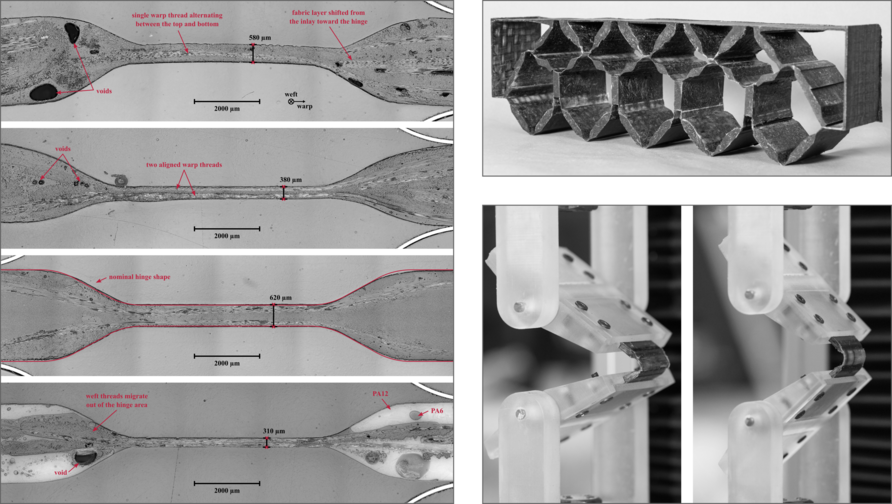Shape-morphing structures based on pressure actuation promise efficiency gains and performance improvements in aeronautics, but require complex three-dimensional geometries. The compliance of these morphing structures originates from local areas of reduced wall thickness. However, the required high wall thickness ratios are challenging for integral fabrication from high-performance fiber-reinforced plastics, which are demanded to achieve high load-bearing capacity. This study investigates different woven flexure hinges made from a hybrid yarn of glass fibers and the polyamide PA6 for application in pressure-actuated cellular structures. The flexure hinges are mechanically characterized under pure axial and pure bending loading in a tensile and a column bending test method specifically derived for flexure hinges. The specimen quality is further assessed by permeability testing, optical microscopy, and thermogravimetric analysis. This study shows that the stiffness of anisotropic flexure hinges can be determined in simple mechanical tests without the need for complex modeling of reinforcing fibers or consideration of manufacturing-specific effects. The mechanical properties of a double-layer hinge configuration are superior to those of a single-layer configuration, whereas integrating additively manufactured PA6 inlays into the woven preform offers an effective approach for achieving high wall thickness ratios. The most promising hinge configuration is selected for the integral fabrication of the aeronautical morphing structure, which consists of multiple pressurized cells.
P. Meyer, M. Vorhof, J. Koord, C. Sennewald, C. Cherif, C. Hühne
Anisotropic flexure hinges: Manufacturing and mechanical characterization for application in pressure-actuated morphing structures
Composites Part B: Engineering, 266, 110967, (2023) [Link]

